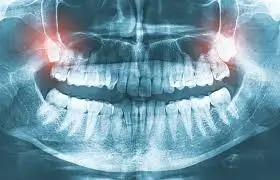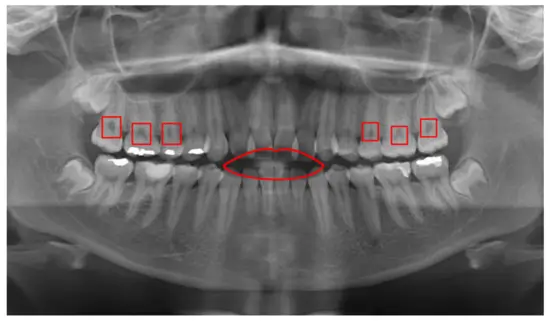Introduction
When it comes to diagnosing dental damage, traditional exams are often not enough. While a visual examination by a dentist provides valuable insight, many oral issues remain hidden beneath the surface. This is where advanced imaging techniques like Panoramic X-rays and CT scans (also known as computed tomography) come into play. These technologies allow dental professionals to examine your mouth and jaw with precision, detecting problems that are not visible to the naked eye.
In this article, we will explore the crucial role these diagnostic tools play in identifying oral damage, their benefits, and how they contribute to effective treatment planning. With advances in dental imaging, we are able to detect issues early on, preventing severe damage and ensuring better long-term outcomes for patients read more.
What Are Panoramic X-rays and CT Scans?
Panoramic X-rays
A panoramic X-ray is a specialized type of dental radiograph that captures the entire mouth in a single image. This includes the teeth, upper and lower jaws, sinuses, and surrounding structures. Unlike traditional X-rays that capture images of a specific area of the mouth, a panoramic X-ray offers a broad overview, making it ideal for detecting widespread issues such as impacted teeth, cysts, and jawbone problems. It is especially useful for orthodontic assessments and for evaluating the health of wisdom teeth before removal.
CT Scans (Computed Tomography)
A CT scan provides more detailed, cross-sectional images of the mouth, teeth, jaw, and surrounding tissues. It is a more advanced technology than the panoramic X-ray, allowing dentists and oral surgeons to view areas from multiple angles and depths. CT scans are often used in more complex cases, such as assessing bone structure before dental implants, detecting tumors, and diagnosing severe damage to the jawbone or teeth. The detailed 3D images produced by CT scans offer unparalleled accuracy in planning surgical procedures and identifying hidden damage.

How Panoramic X-rays Help in Diagnosing Oral Damage
Panoramic X-rays are a valuable diagnostic tool for detecting a wide variety of oral health issues. Here’s how they help:
- Detection of Impacted Teeth:
One of the most common uses of panoramic X-rays is to identify impacted teeth, especially wisdom teeth that are not fully erupting into the mouth. These teeth can cause pain, infection, and long-term damage if not addressed. A panoramic X-ray helps the dentist evaluate the position and condition of these teeth to determine the best course of action. - Jawbone Issues:
Panoramic X-rays provide a clear view of the jawbone, helping dentists detect signs of bone loss or damage. This is crucial for patients with periodontal disease, as bone loss is a major complication. The X-ray can also reveal any cysts or infections that may affect the jawbone and overall oral health. - Cavities and Decay:
While panoramic X-rays are not as detailed as traditional X-rays in spotting cavities, they can still reveal areas of decay, especially those that affect the roots of teeth or areas that are not easily accessible with visual examination. - Orthodontic Planning:
For patients undergoing orthodontic treatment, panoramic X-rays offer a comprehensive view of the entire mouth, helping orthodontists plan the best approach for realigning the teeth and jaws. They also help assess whether the teeth and jawbone can support the planned changes.
The Importance of CT Scans in Diagnosing Severe Oral Damage
CT scans are a more advanced form of imaging, and they play a critical role in diagnosing more severe oral damage. Here’s how CT scans help in dental diagnosis:
- Bone Structure Analysis:
CT scans are particularly useful for assessing the bone structure of the jaw and surrounding tissues. This is essential for patients needing dental implants, as the scan can show whether there is sufficient bone density to support the implant. It also helps detect bone fractures or abnormalities that may not be visible with traditional X-rays. - Detection of Tumors or Abnormal Growths:
One of the most important functions of a CT scan is its ability to detect tumors or other abnormal growths within the mouth, jaw, or surrounding areas. These growths may not be visible during a regular dental examination but can be life-threatening if left undiagnosed. CT scans allow for early detection, which is crucial for successful treatment. - Complex Fractures and Facial Trauma:
For patients who have suffered facial injuries or trauma, a CT scan provides detailed images of the bones and soft tissues. It helps dentists and oral surgeons understand the extent of the injury and plan appropriate treatments, whether that involves surgical repair, tooth extraction, or reconstructive procedures. - Planning for Surgical Procedures:
CT scans are essential for dental professionals planning complex surgical procedures, such as wisdom tooth removal, bone grafts, or implant placements. The detailed images allow the surgeon to view the area in three dimensions, providing a clearer understanding of the anatomy and any potential complications.

The Benefits of Panoramic X-rays and CT Scans
Both panoramic X-rays and CT scans offer several advantages that help dental professionals diagnose and treat oral damage more effectively:
- Early Detection of Issues:
These imaging techniques allow for the early detection of oral health problems, often before they become symptomatic. This can save patients from costly and invasive treatments later on. - Comprehensive Diagnosis:
While traditional dental exams provide important insights, panoramic X-rays and CT scans offer a more complete picture, ensuring no damage goes undiagnosed. - Reduced Need for Invasive Procedures:
By diagnosing problems early, these tools help avoid the need for extensive surgery or emergency procedures. With proper planning, dentists can address issues with minimally invasive treatments. - Improved Treatment Planning:
The detailed images provided by both panoramic X-rays and CT scans enable dental professionals to plan more effective and personalized treatments, resulting in better outcomes and quicker recovery times.
Conclusion
In today’s world, advanced imaging technologies like panoramic X-rays and CT scans are essential tools for diagnosing oral damage. These technologies allow dentists and oral surgeons to detect issues that might be invisible during a regular examination, enabling earlier intervention and more effective treatments. Whether it’s identifying impacted teeth, assessing bone structure, or planning for dental implants, these diagnostic tools are transforming the way we approach oral health.
With the continuous advancement in dental imaging, we can look forward to even more precise and effective diagnostic methods in the future, ensuring healthier smiles for years to come discover more.
